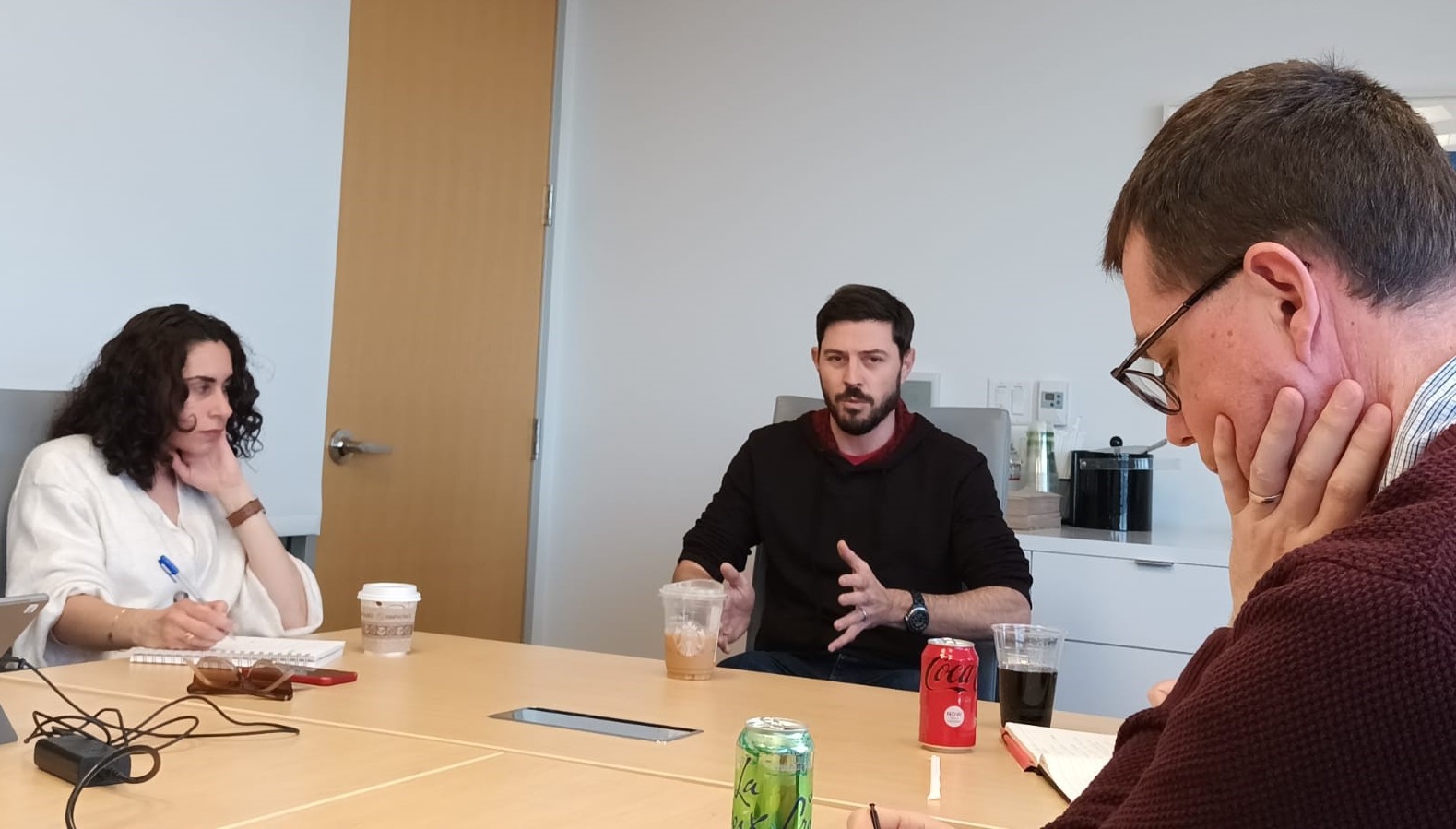Silicon Valley: turn on the lights
27 April 2022
Growth capital: pretty much what every ambitious and scaling tech business needs at some stage in their journey.
And where in the world has the largest concentration of Venture Capital (VC) firms? Silicon Valley of course. There are 2,000 active VCs between San Francisco and San Jose.
During my visit to the Valley last month as part of the FutureX programme (blog one that talks about key themes and learnings can be read here) we met with a number of investors and ‘those in the know’. As anticipated, the expectations and deep pockets of VCs are dramatically different to Scotland: the money available in and around the Bay area is phenomenal. UK companies who have landed on the west coast, have boots on the ground, have made some traction and are ready to do a serious raise, therefore have to step up and be all in.

Homework + honesty is the best policy
When it comes to fundraising, doing your homework sounds obvious doesn’t it? But some think this ends when you step out of the school gates for the final time or that a quick search on TechCrunch suffices. No. Every founder, investor, and adviser we met with in the Valley emphasised that doing in depth research is critical. You must have a laser sharp focus about who is going to invest in your business and at what stage. Which VC is an ideal match for your sub sector? Have you really met their metrics? Be honest with yourself: as a founder, what makes you investible? Research, rejig your approach, and record it all down. And network: in my first Silicon Valley blog, I wrote about the importance of warm connections but if you don’t have this then again, do your homework and think about what else can you do to establish comms and build a relationship with a dream VC.
A few other tips when making an approach: over breakfast, Finbarr Taylor, CEO of ecommerce platform Shogun (recently valued at half a billion dollars), told us that if you want to speak to investors here then you can easily be on calls all day as they are very accessible (way more so than across the pond), but be incredibly specific about what you want and how much you are raising. Their time and attention is finite. The Department of International Trade emphasised that if you’re an outsider company and there's any crossover to companies already in the Valley, then you must be able explain to how you are genuinely different.
Facts, not friends
So, you’ve done your diligence, got the VC’s attention and are ready to send over a pitch deck. This is when any sugar coating stopped on my visit and the advice got real. Chris Neumann, partner at Panache Ventures, said investors want facts, not hypotheses. He doesn’t want to hear about your awards, or your recent press. If you have a slide in your deck that shows more people on your advisory board than on your team, you’ll lose credibility, and that VCs need to be able to tell who’s an employee rather than who you're paying to be your friends: “the people I want to hear from are founders and customers”.
Cameron Graham, CEO of Storiicare, advised keeping decks as simple as possible and to use DocSend when emailing over (a trackable URL so you can see who views it and how long for- useful intel when fundraising) and if you’re poor at design then paying someone to do it for you would be beneficial. You must present the deck in the best format possible as VCs are often seeing 50+ decks a day. He said, “if your company was to have a billboard on Times Square, what would it look like?”. But remember it’s not marketing collateral for clients, it's a deck for investors.

Chris Neumann of Panache explaining his Venture Capital to the group
Pitching and perseverance
We know that investors make bets: some of the companies they back will turn out to be a total loss, some will make an adequate return, and a rare few will fly sky high. Partly due to the sheer amount of money available, VCs in the Valley are less risk averse than in other locations but they’re still taking a gamble and get daily (if not hourly) approaches from founders. FYI, one tech founder told us that for his series A round, he pitched to over 90 VCs and being repeatedly ignored or told “no” got very demoralising, but to always remember that you just need to convince one person in the fund who will make it their deal, If you get to the in-person pitch stage, then it's also vital to tell a big story that turns on the lights. Chris said that Panache typically makes 25 investments a year so are you one of the best companies that he’s going to see in any given month? (He also said that it’s socially acceptable not to respond to an email or a message as a way of saying no - so develop that thick skin).
To throw a curveball into this blog, in a boardroom meeting with Eric McAfee (entrepreneur, venture capitalist, and philanthropist), he said that he encourages entrepreneurs to think about the different kinds of capital available: the VC world is valued at $60 billion a year but debt is a much bigger world. CEOs need to spend time on considering how they will growth finance the business so must pay attention to the balance sheet.
A culture of collaboration
Of course there’s a lot more to Silicon Valley than growth finance: with its exceptional universities, world class talent pool, and cutting edge research & innovation labs, it’s a crossroads for academia, the government, and private sector. But if you are here to secure funding, then you cannot operate on a one-off transactional basis and should take the time to develop your body of knowledge and build those long-term relationships. The Valley has a unique ‘pay it forward’ mentality which is one of the many reasons why it’s so attractive to generations of entrepreneurs: so learn from it, embrace it, and if you stick around, be sure to give back.